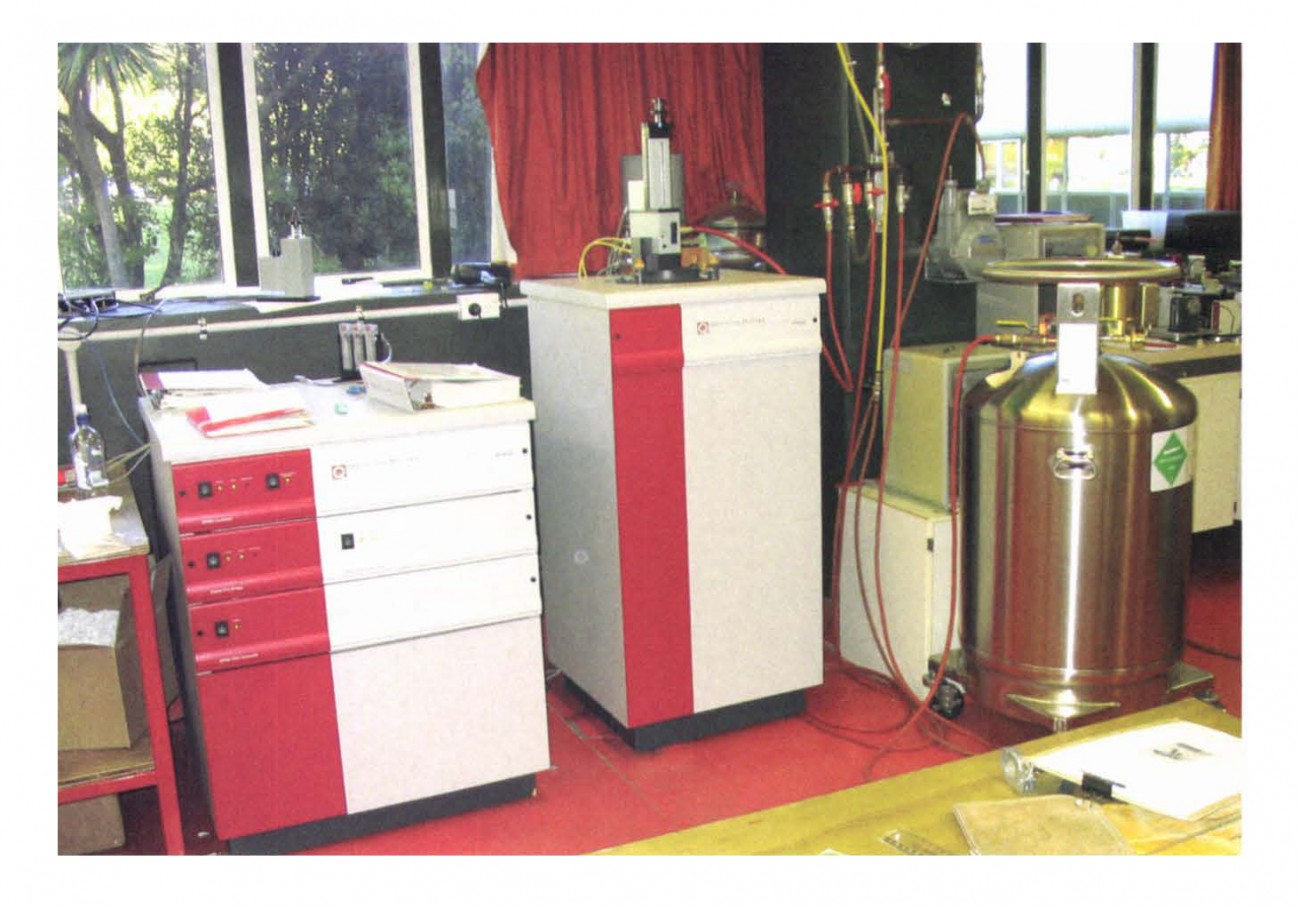Funding research in New Zealand

I have been in the research industry for 38 years. All of that time has been spent as an employee of the former DSIR and in its reincarnation, Industrial Research Ltd—a Crown Research Institute (CRI). That’s a long time in the same job but over those years my studies have taken me to universities in Copenhagen, Oxford, Cambridge, London and Paris, and more recently I took up a joint appointment at Victoria University. I collaborate with more than a dozen different institutions around the globe, have acted as a peer reviewer for research proposals from many different countries and served time as deputy chair of the NZ Marsden Fund and on a ministerial science delegation to the EU.
All this represents considerable experience with both the NZ and international funding environments. Over the years many changes have taken place, most notably the disestablishment of the DSIR and the ongoing realignment of funding through the Foundation for Research, Science and Technology (FRST).
Not all these changes have been good for NZ science, and there is now a huge administrative overburden and some major gaps within the system. What follows is an attempt to outline just some of the issues. Despite my university experience, my perspective is primarily that of the CRI sector.
The merits of a “knowledge-based” economy in New Zealand are widely recognised and often stated. It is now almost a cliché that “we must increasingly complement our traditional large-volume low-profit commodity products with a wide range of value-added smart products”.
This demands a commitment to research and development, and there have been attempts in recent years to bolster these. The problem is that our international competitors have come to the same conclusion and are making much more serious investments in science and technology with very aggressive targets.
The EU has adopted a goal of 3 per cent of GDP directed to research spending by 2010. New Zealand is currently sitting at around 1.0 per cent and has abandoned its old target of 1.8 per cent. What is worse is the fact that per-capita GDP in Europe is much higher than here, so our per-capita spending falls even further behind the EU goals. Now I don’t want to focus here on quantity but rather on mechanism. Suffice to say that we invest a quarter the per-capita research spending of Denmark. We cannot therefore claim a special exemption for small countries. The numbers game shows that we are not as serious about research knowledge as we make out.*
The “business as usual” stance adopted by our science ministry will leave an ever growing gap between NZ and the rest of the developed world. The US InterAcademy Council recently concluded that, in order to survive competitively, developing nations must adopt science-spending targets of 1.5 per cent of GDP. This should serve as a major wake-up call to our own nation.
Worse still, the few dollars that do come are fickle. We have a competitive funding system that might support a research programme for several years then shifts its resources to other competing programmes a few years later.
Research institutions therefore invest much time in attempting to second-guess these wind shifts. But in the end it is all a bit of a lottery. Change the allocating committee and there will be a different set of winners and losers. More importantly, this approach fails to recognize that to convert a scientific discovery into a commercial business always takes at least 10 to 15 years. In my own area of research, superconductivity, it has taken 17 years to spin off a viable business.
Let’s be clear about the consequences of missing out on government-allocated research funding. Tenured university staff will be restricted in their ability to hire short-term staff (mainly post-doctoral fellows) but they will not lose their jobs. Staff from CRIs and other similar providers cannot subsidise their researchers from other projects. Redundancies are inevitable.
A few years ago 40 staff were stripped from HortResearch. More recently, 20 were lost from Forest Research. The most recent funding round left a number of institutions, including my own, reeling. It takes years to recruit research staff from home and abroad, and a young PhD with post-doctoral experience will have spent 11 years in training—as much as a third of their working career. One has to ask, why would they invest so much in science in the present uncertain climate? New Zealand is unusual, if not unique, in having so much of its public science funding contestable. Other developed countries protect valuable staff by providing bulk grants to research institutes—allowing the institutes to distribute the money internally as they see fit—and having only a modest fraction of research funding contestable.
Government recognizes the problem but seeks to balance “stability” with “flexibility”. By flexibility it means opportunity for new entrants, new ideas and new directions. Competitive bidding to an agency such as FRST is its preferred paradigm for ensuring flexibility.
Stability has recently been tackled by lengthening the funding period up to a maximum of six years. But this has the opposite effect for the losers. They may not bid again for as much as four years and certainly cannot be “carried” for so long a period. In such cases redundancy is more effectively ensured.
Can a committee possibly make correct choices? A post-war committee advised the Japanese government that car manufacture for the highly competitive export market was out of the question! History has told a very different story.
Prior to the last bidding round, my institute spent 18 months radically repositioning its technology platforms to marry research capability with business opportunity for New Zealand. This was a rigorous process that introduced, in some cases, wholly new activities consistent with the resources we could bring to bear. The result was a number of broad-based and innovative programmes that crossed all the old boundaries between disciplines.
This internal process showed that “flexibility” does not require external competitive bidding. Along with others I personally toiled at this task for 6 months, setting aside research responsibilities to effect the best possible outcome, only to then engage in what I have referred to as the lottery of the bidding process to a committee on which scientists were hopelessly underrepresented!
Such a situation results in, at best, a single panel member who has direct expertise in the field of investigation. But this creates great risk because a mistaken view by the single “expert” cannot be questioned or controverted by the other inexpert panel members. There must be sufficient scientists on a panel for a technical issue raised by one to be intelligently evaluated by another member. Everyone has their prejudices and limits to their knowledge.
A better balance would be achieved by a panel composed mainly of scientists with two industry or business people. This is the opposite of the current model. This downplaying of the importance of scientific excellence and expertise is carried through to the review process, in which governance is clearly more valued than scientific outcomes. In fact, government must recognise that its institutions are capable of conducting their own rigorous review processes that can address both scientific excellence as well as commercial outcomes.
Finally, there is an urgent need to introduce a funding mechanism New Zealand. This was a rigorous process that introduced, in some cases, wholly new activities consistent with the resources we could bring to bear. The result was a number of broad-based and innovative programmes that crossed all the old boundaries between disciplines.
This internal process showed that “flexibility” does not require external competitive bidding. Along with others I personally toiled at this task for 6 months, setting aside research responsibilities to effect the best possible outcome, only to then engage in what I have referred to as the lottery of the bidding process to a committee on which scientists were hopelessly underrepresented!
Such a situation results in, at best, a single panel member who has direct expertise in the field of investigation. But this creates great risk because a mistaken view by the single “expert” cannot be questioned or controverted by the other inexpert panel members. There must be sufficient scientists on a panel for a technical issue raised by one to be intelligently evaluated by another member. Everyone has their prejudices and limits to their knowledge.
A better balance would be achieved by a panel composed mainly of scientists with two industry or business people. This is the opposite of the current model. This downplaying of the importance of scientific excellence and expertise is carried through to the review process, in which governance is clearly more valued than scientific outcomes. In fact, government must recognise that its institutions are capable of conducting their own rigorous review processes that can address both scientific excellence as well as commercial outcomes.
Finally, there is an urgent need to introduce a funding mechanism has absolutely transformed research capability within the MacDiarmid Institute in which I have responsibilities. The extremely positive outcomes from this initiative should be studied as a model for opening government-initiated capital funding to all research institutions in NZ.
In the light of this rather negative outlook, here are some recommendations. My view is that CRIs should be predominantly bulk funded, somewhat as they were back in the days of DSIR but with a strong accountability regime. Here is a possible model:
- 70 per cent bulk fund institutes to ensure “stability” of core activities
- 30 per cent competitive bidding to ensure “flexibility”
- full accountability placed on CEOs for quality, relevance, commercial success, flexibility and stability
- review the quality of science for each institute every six years, the reviews to be undertaken by a panel of internationally recognised scientists
- conduct six-yearly reviews of commercial activity using a mixed panel of scientists, manufacturers and business people, these reviews to be offset by three years from the science reviews
- reviews to recommend changes in investment at institute level (to the funding agency) and at programme level (to CEOs)
- reviews to guide strategic directions so that activities can migrate over time, subject to recruitment, retraining, re-teaming and infrastructure development, which all take many years; evolution of research platforms to be internally managed with accountability for outcomes, not by an external guillotine committee
- continued freedom to commercialise, and to reinvest commercial income
- the New Economies Research Fund (NERF) to reaffirm the central role of fundamental science in the CRIs as much as in the universities, which would necessitate a stronger representation of scientists on the panels
- NZ must urgently readopt its old R&D target of 1.8 per cent GDP
- perhaps most importantly, this country must follow the standard set by all western countries and introduce mechanisms whereby researchers can bid to the funding agencies for purchasing capital research equipment.
There is a telling Maori proverb: “He rakau morimori e kore e taea to piki “—”A tree stripped of its branches cannot be climbed”. The knowledge society will not thrive on fear, uncertainty and deprivation. The funding system must recognize the long-term nature of research activity and work to ensure stability with genuine research career options for upcoming students. We as a nation can be much bolder in our commitment to, and investment in, research. Scientists must be excellent and accountable—so must the funding system.

















